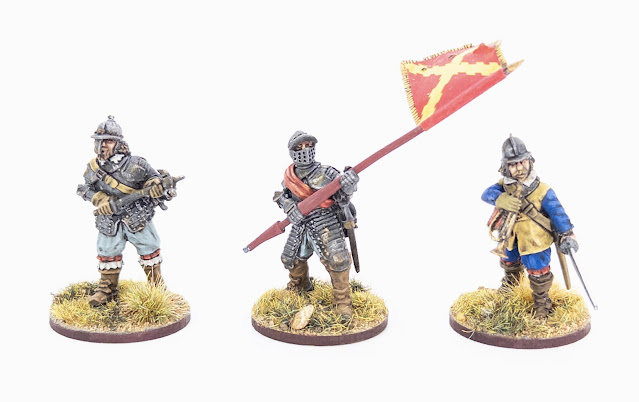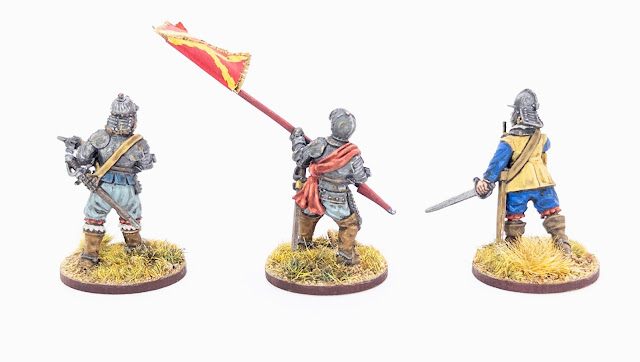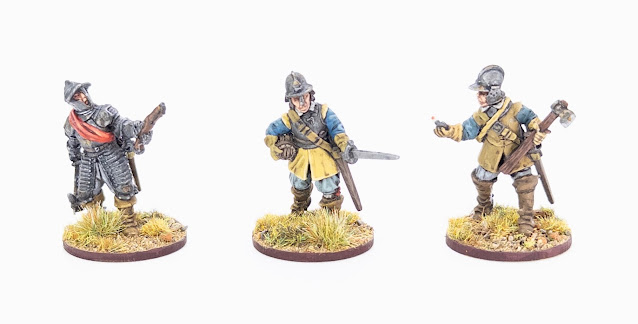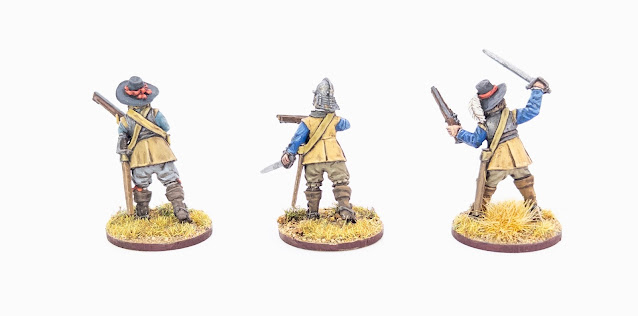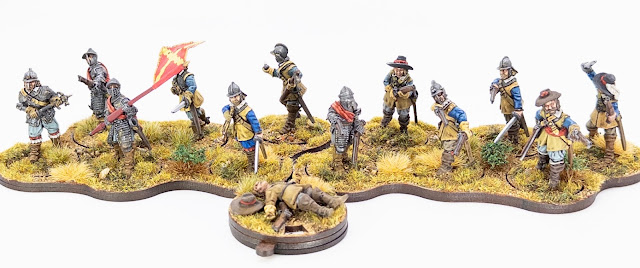This post looks at the first unit recruited in to my Ottoman army for the Khotyn 1621 project.
 |
| 28mm figures from Warfare Miniatures - casualty from Warlord Games |
The start of this years’ hobbying has involved lots of research into the Ottoman army. I have been scouring the various Helion, Osprey and other books / websites that I have been able to find regarding the 16/17th Ottomans. It is not straightforward to decipher an order of battle, or even a clear definition of the troop types. I have had to adopt a level of pragmatism to allow me to press on with getting some figures on the table.
 |
| A quicker painting approach than normal was used for this unit. |
Research, Thoughts, and Decisions
I have decided to simply split the infantry in to two categories: the Janissaries, and the provincial infantry (the Serhaddkulu infantry). The non-Janissary infantry was actually made up from a bewildering array of different recruitment sources. Their exact make up and numbers was not clearly documented at the time
and is very hard to tie down now. Despite the variety of recruitment methods, their use on the battlefield seems to have been fairly uniform. Ottoman commanders seem to have wanted more musket armed infantry to support, or stand in for, the musket armed Janissaries. I decided it would become a bit arbitrary to try and differentiate amongst the different types of non-janissary infantry and so, to start with, I’m just going to have two flavours in the army. More efficient and effective musket armed foot, the Janissaries, and less efficient/effective foot, the provincials.
(It seems that as the 17th century continued some of the non-Janissary infantry started to rival and possibly even supplant the Janissaries as the better troops. This makes no difference to my force as I will still have some better infantry and some worse.)
The next thing was to look at clothing / uniforms. This was even more confusing! The fancy Janissary uniform, with the amazing head-dress, is well known by figure manufactures and is commonly pictured in books. The easy route would be to have used this full dress costume for the Janissaries and something else of the others types of infantry. However I couldn’t get away from the suggestion that, in action, the Janissaries didn’t risk their fancier outfits, and instead wore an irregular selection of what ever they preferred. This means they would probably look very similar to the provincial / Serhaddkulu infantry, if subtly better dressed / armed.
As I still wanted to be able to easily see the difference between the infantry types on the table I made the somewhat arbitrary choice to base them differently rather than have different figure types. The Janissaries / effective infantry will be on my regular 40mm square bases, with 4 figures to a base. The provincial / less-effective infantry will be on 60mm squares with 6 figures on a base (as I have done for my irregular Scottish Highlanders). So even if the figures look very similar, the different formations / base sizes will distinguish the two basic types of infantry.
There are two caveats that I have made to this attractively simple approach. One is the formation of special ‘volunteer’ storming parties that were formed before some of the assaults at Khotyn. To represent these I may have some special units on the 60mm square bases - I’m still thinking about this. The second caveat is the dismounting of the Ottoman cavalry to take part in assaults. This is also a challenge to consider in the future.
 |
| Flags are from Warfare Miniatures and Wargames Designs. |
The First Unit
Following the planning above I settled on ordering some figures from Warlord Games, Warfare Miniatures, The Assault Group, and also Perry Miniatures, all of which have Ottoman infantry ranges. The Perry range is aimed at the end of the 18th / beginning of the 19th century, but by choosing some of the ‘irregular’ codes they appear to me to be useable for the 17th century. The muskets should probably be matchlocks but it’s pretty hard to tell at this size of figure and so I’m willing to over look this as the figures are so nice. Warfare and Perry look like they will mix in units quite nicely, but are both a little taller than the TAG figures. Warlord are between the two extremes. I may not mix TAG in the same units with Warfare/Perry, but keep them in their own units.
 |
| Some disagreement may be? |
The first unit off the painting table are all Warfare miniatures. Even with my simplified approach to Ottoman infantry I am still going to need a lot of them and so I had a hard think about how to paint them. The previous unit I had painted were some Bloody Minis on which I had lavished quite a lot of time. This was great fun, but made my already slow painting pace even slower. For the Ottomans I decided to have a go at a potentially quicker approach; the under-painting / zenithal highlighting / slap-chop technique that has become very popular in recent years. There are some great explanations online about this approach and probably my favourite is by Stuart at Miniature Realms - take a look at his YouTube channel here - link.
 |
| 28mm Perry Miniature primed in dark brown by hairy brush. |
 |
| Heavy dry brush with Tan Earth. |
 |
| Lighter dry brush with Wraithbone. |
Rather than use an airbrush to prime and undercoat the figures, as Stuart does with black to white, I have primed in my regular dark brown by brush, and then dry brushed up through tan to off white. This dry brush means that the more translucent ‘Contrast’ types paints give a one coat, quite contrasty, shaded look to the figures.
It is certainly possible to take things a stage further, as Stuart shows, by adding further highlights over the one coat of contrast. However this takes precious time. I did try this on the command base, and I think the final look of the figures benefits from the extra attention. However, for the rank and file, and to get them on the table quicker, I will try and stick to a one-and-done approach. They do not look like my best work, but I think they are serviceable once on the table.
 |
| 28mm Ottoman casualty by Warlord Games on a Warbases counter base. |
From this first unit I would say they take at most half the time of my regular approach (base coat over brown prime, wash, then highlights).
In Conclusion
The start of the project has been, as I suppose is normal for me, quite slow and involved much time decision making. Hopefully I can pick up the pace a bit now, and start getting some infantry units done. Up next are … more Ottoman infantry.
Until next time!
Andy @ The Friends of General Haig (FoGH)




